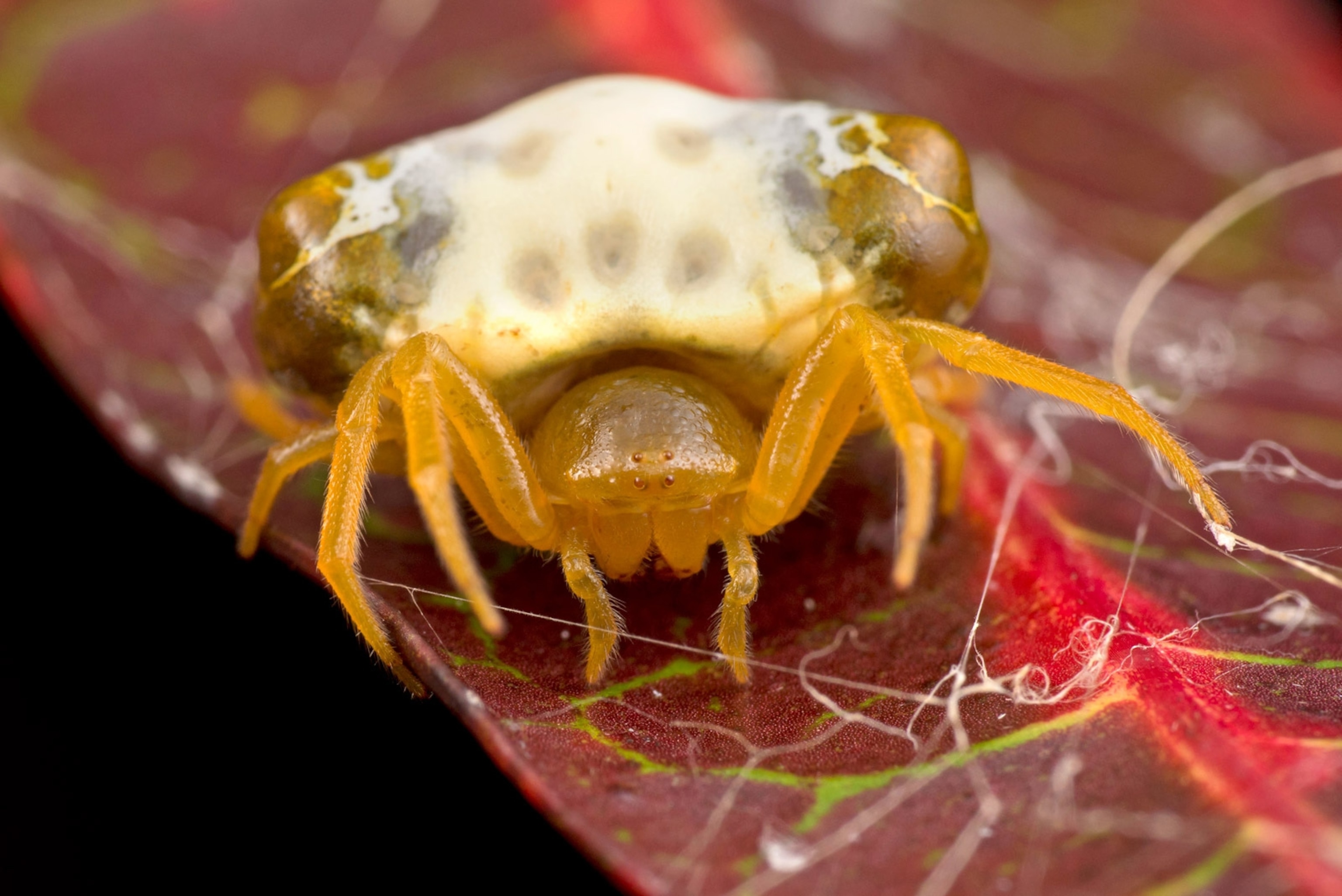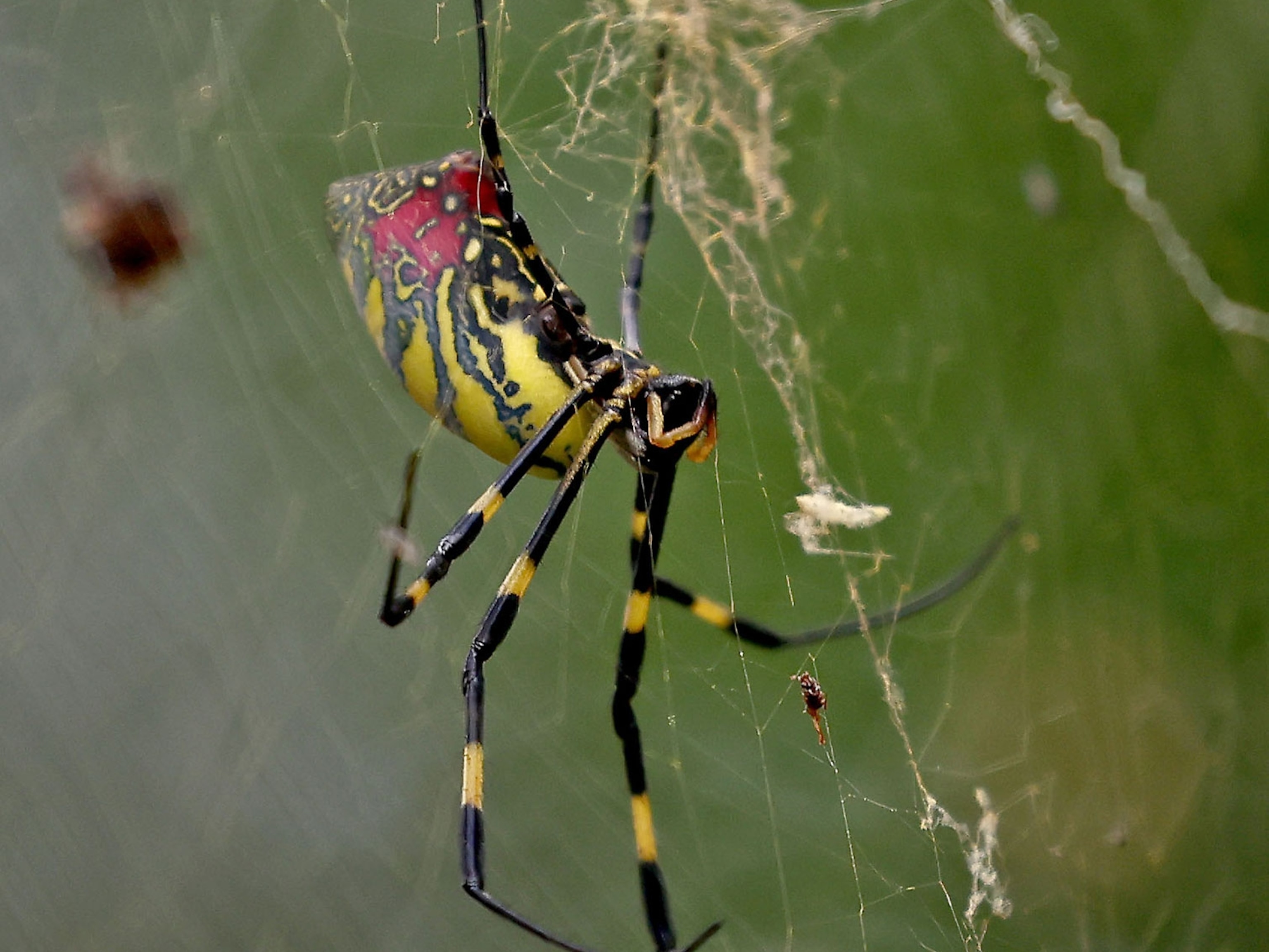Disco Spider Pulsates With Color, Baffling Scientists
"I haven't seen anything like it," scientist says of the flashy arachnid from Asia.
That shifting, swirling thing that resembles a snake’s head? It’s a spider.
Rather, a spider’s abdomen. Regularly photographed in Singapore, the creature's pulsating designs are proving a tricky puzzle to solve. Scientists don’t know how the arachnid, in the genus Cyrtarachne, produces the internal movements, let alone what purpose it might serve.
“People love to jump to conclusions what such a behavior is good for,” such as attracting prey or deterring predators, says Rainer Foelix, author of the book Biology of Spiders.
“Rather than to speculate, it would be better to study this phenomenon scientifically,” Foelix says.
“I haven’t seen anything like it,” adds Linda Rayor, a spider biologist at Cornell University. “Really, it is bizarre and interesting.”
Swirling Mystery
Photographer Nicky Bay has been recording the mysteriously morphing spiders for years in the forests of Singapore, though he only recently compiled a collection of photos and videos documenting the perplexing phenomenon.

These curious pulsations have also been observed in India: A 2015 post on the Entomology Facebook page described a spider putting on a similar display.
Of course, spiders do some pretty crazy things, like disguising themselves as leaves or ladybugs, tap-dancing for love, and sculpting fake spiders to hang as decoys in their webs.
But adult arachnids don’t usually change their appearance much. A few species of crab spiders reversibly change color to blend in with their surroundings, and spiders in the blinged-out genus Thwaitesia can quickly expand and contract shiny, mirrorlike cells covering their abdomens.
These exceptions are nothing like the disco-ball brilliance of the pulsating Cyrtarachne.
Surprised Spider?
Cyrtarachne species are colloquially referred to as bird-dropping spiders because of the critters' magnificent imitations of avian turds.
Spider expert Joseph Koh—also known as Singapore's Spider-Man—is pretty sure the spiders in Bay's photographs are Cyrtarachne inaequalis, but he hasn’t positively identified them.
C. inaequalis is common, but small, says Koh, of the Lee Kong Chian Natural History Museum. Females have abdomens that are only about a centimeter across, and males are even tinier. (See 10 beautiful photographs that will make you love spiders.)
That might be one reason why this unusual phenomenon has not attracted much attention so far: It’s just hard to see.
Based on Bay’s photos and videos, Foelix, the book author, suspects the pulsations occur when pigmented cells in its gut begin to contract.
Still in the Dark
“I’m not sure what to make of it beyond what Nicky has laid out,” says the University of Pittsburgh's Nathan Morehouse, who studies the evolution of coloration.
Popular theories are that the spider is masquerading as the threatening head of a snake or praying mantis.
Yet “without a better handle on how variable this is within the population, it’s difficult to make any headway with hypotheses about [what it could be mimicking]," Morehouse says.
"I’d start with trying to understand what the membrane is that’s moving, and why it might be moveable. And why it might be colored.” (Watch baby spiders emerge from mysterious "Silkhenge" structures in the Amazon.)
Koh agrees that many more observations are needed to answer his many questions.
Among them: “Do they spin webs? Are they active in the day or are [they] nocturnal, when predators may not be able to see the subcutaneous movement? Do the pigments routinely show movement, or do the patterns pulsate only when the spider is disturbed or stressed?"
For now, we'll have to be satisfied with watching the mesmerizing swirls of this strange, beautiful spider.





